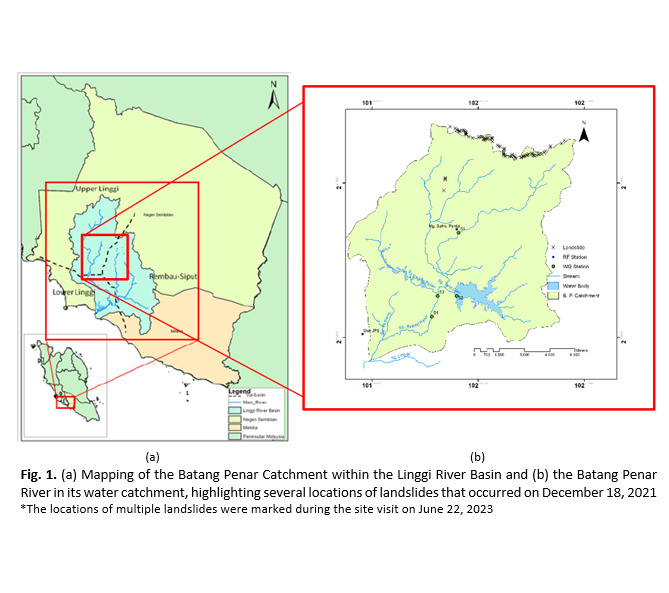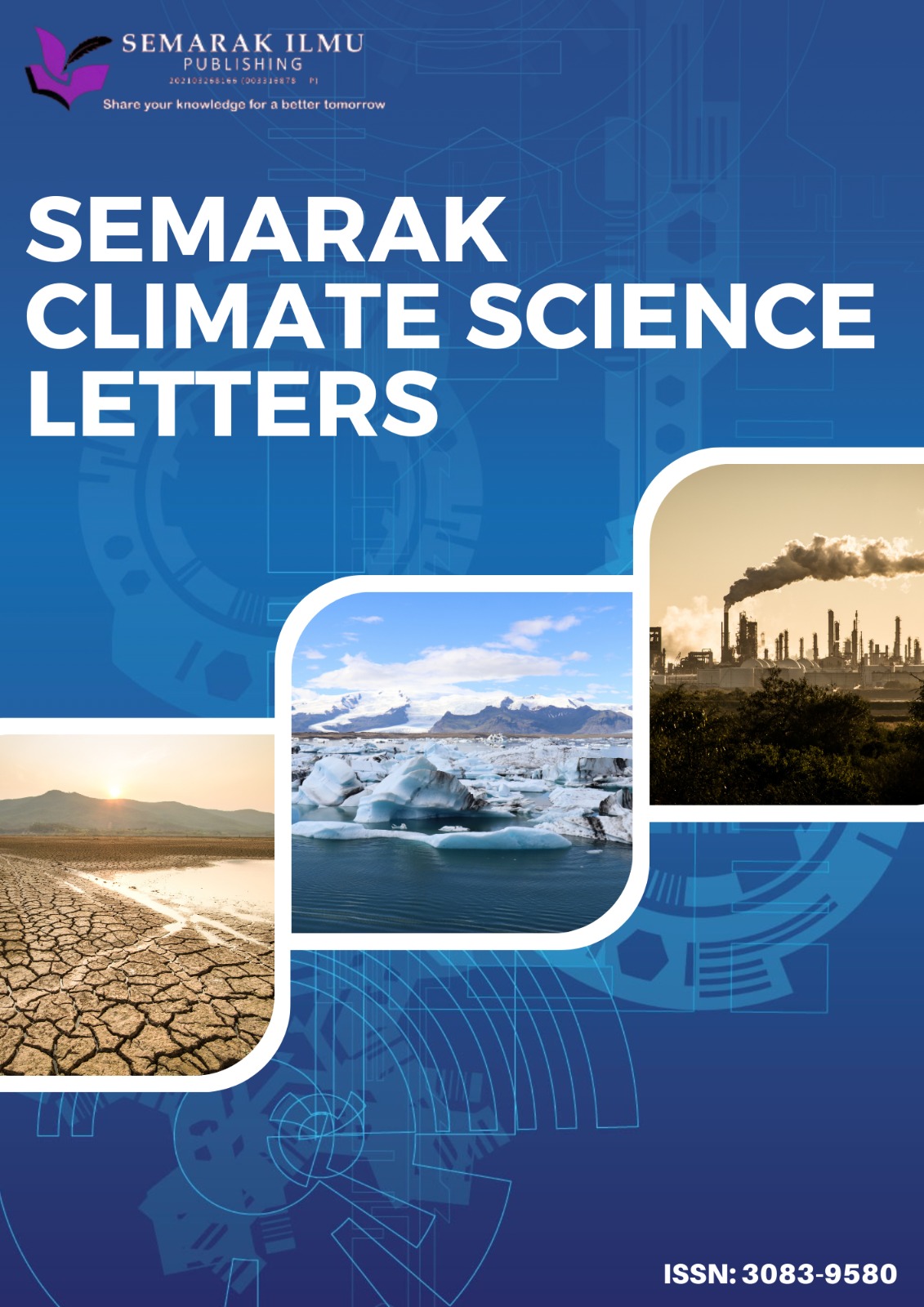The Effects of Landslides on River Sedimentation and Water Quality: Insights from the Batang Penar River, Malaysia
DOI:
https://doi.org/10.37934/scsl.1.1.123bKeywords:
Landslides, rainfall correlation, total suspended solids, sedimentation, water qualityAbstract
Landslides pose a significant environmental threat in tropical forested catchments, as they can severely impact water quality and increase sedimentation in downstream rivers. This study evaluates the effects of landslides that occurred on December 18, 2021, in the Berembun Forest on the water quality of the Batang Penar River. Precipitation data and water quality parameters for 2021-2022 were recorded by the Department of Irrigation and Drainage (DID) at 15-minute intervals and by the Department of Environment (DOE) at two-month intervals. The analysis focused on changes in Total Suspended Solids (TSS), Biochemical Oxygen Demand (BOD), Chemical Oxygen Demand (COD), and Ammoniacal Nitrogen (AN), as well as their correlations with rainfall. Statistical methods, including T-tests, simple regression, and Pearson’s correlation coefficient, were employed to assess the landslide impacts. The results indicated a significant increase in TSS (66.833 to 132.28 mg/L, p = 0.0143) following the landslides, while variations in BOD (1.23 to 0.92 mg/L, p = 0.1767), COD (10.63 to 10.00 mg/L, p = 0.4640), and AN (0.10 to 0.03 mg/L, p = 0.0912) were not statistically significant. Contrary, correlation between rainfall and water quality parameters show no statistically significant difference, suggesting no enhanced sedimentation. Notable spatial and temporal variations in water quality were also observed across sampling stations. The findings highlight the impact of land use that shade the pollutions from landslides on water quality especially parameter TSS, underscoring the importance of implementing effective land use planning, with supplementing landslide prevention and post-event rehabilitation strategies to mitigate sedimentation and safeguard water resources.









